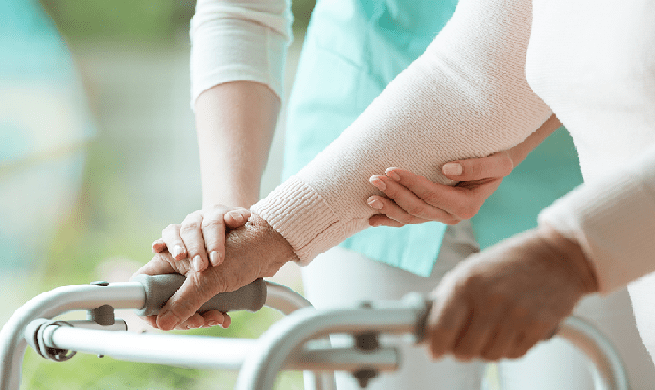Movement Disorders Expert in Perumbakkam
Your Trusted Partner in Movement Disorders
Movement disorders are a group of neurological conditions that cause abnormal voluntary or involuntary movements, which can affect quality of life and daily functioning. We are here to provide you with top-notch care and guidance to manage and improve your symptoms.

Understanding Movement Disorders
What are Movement Disorders?
Movement disorders are a group of neurological conditions that affect the speed, fluency, quality, and ease of movement. These disorders can cause either excessive movements (hyperkinetic) or a lack of movement (hypokinetic). Movement disorders can significantly impact a person’s ability to perform daily activities and can vary in severity from mild to debilitating. Common examples include Parkinson’s disease, essential tremor, dystonia, Tourette syndrome, and Huntington’s disease. These conditions result from abnormalities in the brain’s movement control regions, particularly the basal ganglia. Treatment typically involves medications, lifestyle changes, physical therapy, and sometimes surgical interventions to manage symptoms and improve quality of life.
Causes of Movement Disorders
Genetic Mutations: Inherited genetic defects can cause conditions like Huntington’s disease and some forms of dystonia.
Neurodegenerative Diseases: Progressive loss of nerve cells, as seen in Parkinson’s disease and multiple system atrophy.
Autoimmune Disorders: Conditions like multiple sclerosis can lead to movement abnormalities due to immune system attacks on the nervous system.
Infections: Viral or bacterial infections affecting the brain, such as encephalitis, can result in movement disorders.
Metabolic Disorders: Imbalances or deficiencies in the body’s metabolism, including Wilson’s disease (copper metabolism disorder).
Medications: Long-term use of certain drugs, such as antipsychotics, can cause movement disorders like tardive dyskinesia.
Brain Injuries: Traumatic brain injuries or strokes can damage areas of the brain involved in movement control.
Toxins: Exposure to environmental toxins, such as heavy metals or pesticides, can damage the nervous system and lead to movement disorders.
Structural Abnormalities: Congenital malformations or acquired abnormalities in brain structure can cause movement disorders.
Idiopathic: In some cases, the exact cause of a movement disorder is unknown, termed idiopathic.
Symptoms of Movement Disorders
Tremors: Rhythmic, involuntary shaking of a part of the body, often affecting the hands, arms, or legs.
Bradykinesia: Slowness of movement, commonly seen in Parkinson’s disease.
Dystonia: Sustained or repetitive muscle contractions causing twisting and repetitive movements or abnormal postures.
Chorea: Involuntary, rapid, and irregular movements that can affect the face, limbs, and trunk.
Myoclonus: Sudden, brief, and involuntary muscle jerks or twitches.
Athetosis: Slow, writhing movements, typically affecting the hands and feet.
Tics: Sudden, repetitive, non-rhythmic movements or sounds, such as blinking, grimacing, or throat clearing.
Hemiballismus: Flailing, ballistic movements of the limbs on one side of the body.
Restlessness: A continuous need to move, often accompanied by a feeling of inner restlessness, as seen in restless legs syndrome.
Rigidity: Increased muscle tone causing stiffness and resistance to movement, often associated with Parkinson’s disease.
Balance and Coordination Problems: Difficulty maintaining balance and coordinating movements, leading to unsteady gait and frequent falls.
Speech Difficulties: Problems with speech, such as slurred or slowed speech, due to muscle control issues.

Treatments
- Medications: These include dopaminergic agents to increase dopamine levels, such as levodopa for Parkinson’s disease, anticholinergics to control tremors and rigidity, muscle relaxants to reduce spasticity in conditions like dystonia, anticonvulsants to manage myoclonus, and beta-blockers for essential tremor.
- Botulinum Toxin Injections: Used to relax muscles and reduce abnormal movements, particularly in conditions like dystonia and spasticity.
- Deep Brain Stimulation (DBS): A surgical procedure that involves the implantation of electrodes to regulate abnormal brain activity, commonly used for Parkinson’s disease, essential tremor, and dystonia.
- Physical Therapy: Focuses on improving mobility, strength, and coordination through tailored exercises.
- Occupational Therapy: Helps individuals adapt daily activities and improve fine motor skills.
- Speech Therapy: Addresses speech and swallowing difficulties associated with movement disorders.
- Lifestyle Modifications: Incorporates regular exercise, a balanced diet, and stress management techniques to help manage symptoms.
- Assistive Devices: Utilization of canes, walkers, or other mobility aids to enhance safety and independence.
- Surgical Interventions: Includes procedures such as thalamotomy or pallidotomy for severe, treatment-resistant cases.
- Behavioral Therapy and Counseling: Provides support for coping with the psychological impact of movement disorders.
- Genetic Counseling: Offers information and support for hereditary movement disorders.
- Regular Monitoring and Follow-Up: Ensures ongoing evaluation by healthcare providers to adjust treatments and monitor disease progression.
Frequently Asked Questions on Movement Disorders
Diagnosis typically involves a thorough medical history, neurological examination, blood tests, imaging studies (MRI or CT scans), and sometimes genetic testing.
Some movement disorders, like Huntington’s disease and certain types of dystonia, have a genetic component and can be inherited.
DBS involves surgically implanting electrodes in specific areas of the brain. These electrodes send electrical impulses to regulate abnormal brain activity, helping to control symptoms of movement disorders.
If you experience symptoms of a movement disorder, you should consult a neurologist or healthcare provider for a comprehensive evaluation and appropriate diagnostic testing. Early diagnosis and treatment can improve outcomes and quality of life.
